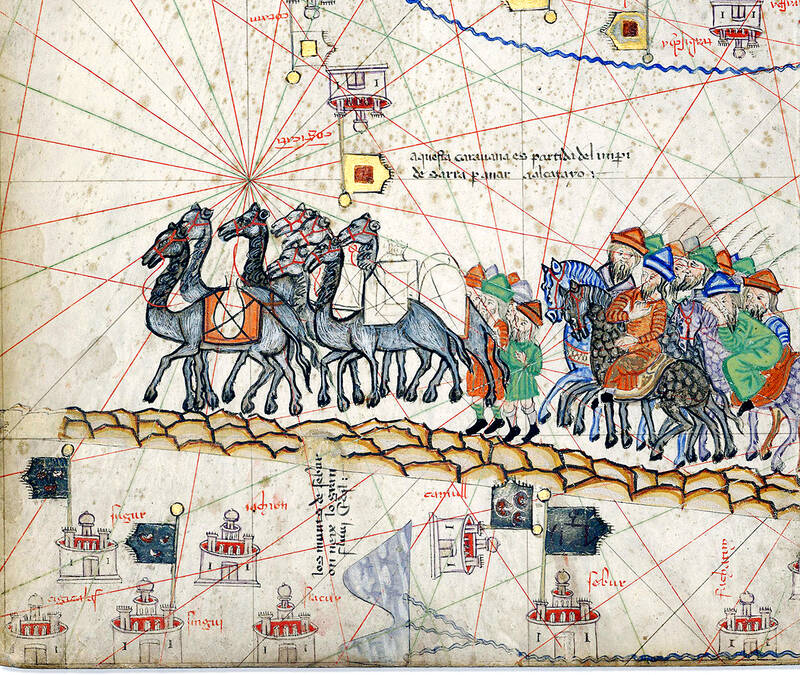Two 500-year-old shipwrecks in the South China Sea, filled with Ming-era porcelain and stacked timber, provide significant clues about the maritime Silk Road trade routes, Chinese archaeologists have said.
The two shipwrecks were discovered in October, and cultural and archaeological authorities have now begun a year-long process of deep-sea exploration and excavation, government officials announced.
Marine researchers found the two vessels in the north-west region of the South China Sea, about 1,500 meters below sea level. The officials said the wrecks were “relatively well preserved, with a large number of cultural relics.”

Photo courtesy of Wikimedia Commons
Experts said one of the wrecks dated back to the Ming dynasty’s Hongzhi period, which lasted from 1488 until 1505. It was carrying a cargo of stacked persimmon timber logs and some pottery.
The other wreck dates back to the Zhengde period of 1506 to 1521. The ship was laden with more than 100,000 pieces of porcelain crockery. Photographs show piles of stacked bowls, plates and jars, with intricate designs still visible underneath the sand and mud.
The archaeologists said the two ancient ships were traveling in different directions, and the wrecks were found less than 20km apart. They said it was the first time vessels returning and arriving had been found near each other, indicating they were traveling on an important trade route.

Photo courtesy of Wikimedia Commons
“It helps us study the maritime Silk Road’s reciprocal flow,” Tang Wei, the director of the Chinese National Center for Archeology, said.
The exact location of the wrecks was not disclosed, but the officials said markers were established on the site.
Chinese archaeological exploration has advanced into deeper waters in recent years, after the 2018 establishment of a deep-water archeology laboratory by the National Center for Archeology and the Institute of Deep-Sea Science and Engineering.
The officials said researchers were taken underwater on Saturday by the submersible Shenhai Yongshi, or Deep Sea Warrior, which can carry people to a depth of 5,000 meters.
There are three phases to the planned research program, with an estimated 50 dives to be conducted between now and April.
“We first need to figure out the condition of the shipwrecks, and then we can draft plans for archaeological excavation and conservation,” said Song Jianzhong, a researcher at the National Center for Archeology.
By mid-June, researchers plan to have assessed the distribution area of both wrecks, put together a widespread data collection and taken archaeological records, extracted some of the relics as specimens and sampled the surrounding seafloor.

Taiwan can often feel woefully behind on global trends, from fashion to food, and influences can sometimes feel like the last on the metaphorical bandwagon. In the West, suddenly every burger is being smashed and honey has become “hot” and we’re all drinking orange wine. But it took a good while for a smash burger in Taipei to come across my radar. For the uninitiated, a smash burger is, well, a normal burger patty but smashed flat. Originally, I didn’t understand. Surely the best part of a burger is the thick patty with all the juiciness of the beef, the

The ultimate goal of the Chinese Communist Party (CCP) is the total and overwhelming domination of everything within the sphere of what it considers China and deems as theirs. All decision-making by the CCP must be understood through that lens. Any decision made is to entrench — or ideally expand that power. They are fiercely hostile to anything that weakens or compromises their control of “China.” By design, they will stop at nothing to ensure that there is no distinction between the CCP and the Chinese nation, people, culture, civilization, religion, economy, property, military or government — they are all subsidiary

Nov.10 to Nov.16 As he moved a large stone that had fallen from a truck near his field, 65-year-old Lin Yuan (林淵) felt a sudden urge. He fetched his tools and began to carve. The recently retired farmer had been feeling restless after a lifetime of hard labor in Yuchi Township (魚池), Nantou County. His first piece, Stone Fairy Maiden (石仙姑), completed in 1977, was reportedly a representation of his late wife. This version of how Lin began his late-life art career is recorded in Nantou County historian Teng Hsiang-yang’s (鄧相揚) 2009 biography of him. His expressive work eventually caught the attention

This year’s Miss Universe in Thailand has been marred by ugly drama, with allegations of an insult to a beauty queen’s intellect, a walkout by pageant contestants and a tearful tantrum by the host. More than 120 women from across the world have gathered in Thailand, vying to be crowned Miss Universe in a contest considered one of the “big four” of global beauty pageants. But the runup has been dominated by the off-stage antics of the coiffed contestants and their Thai hosts, escalating into a feminist firestorm drawing the attention of Mexico’s president. On Tuesday, Mexican delegate Fatima Bosch staged a